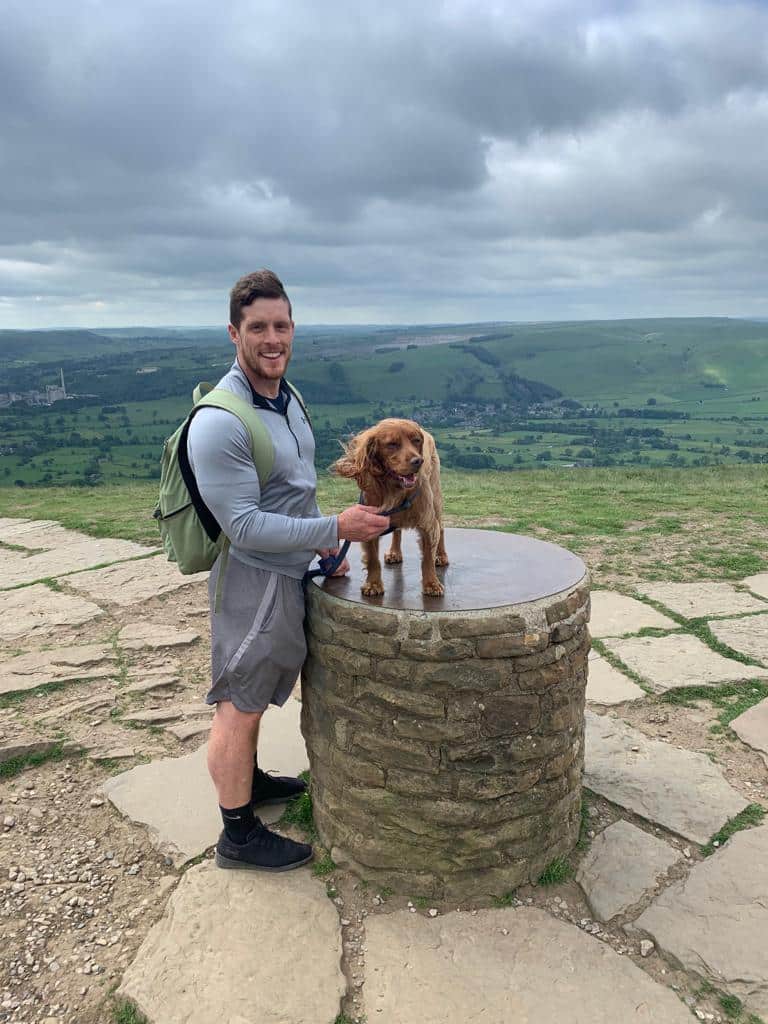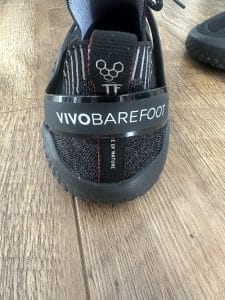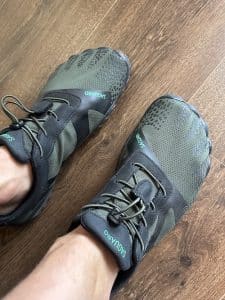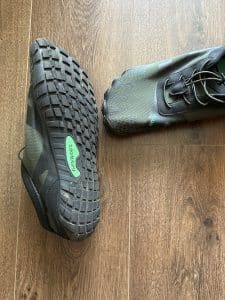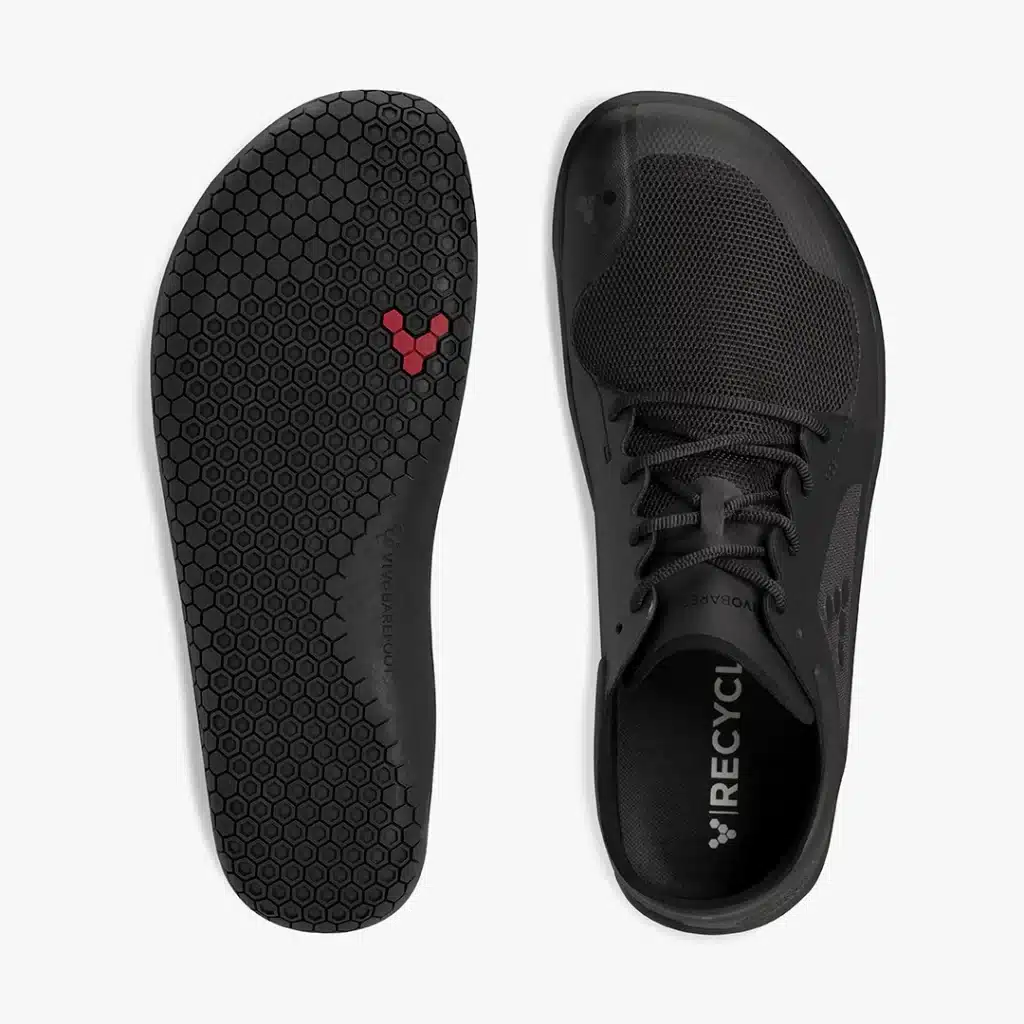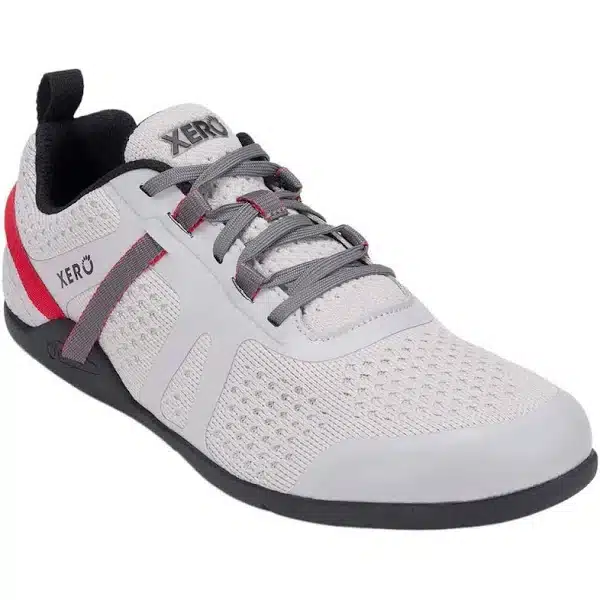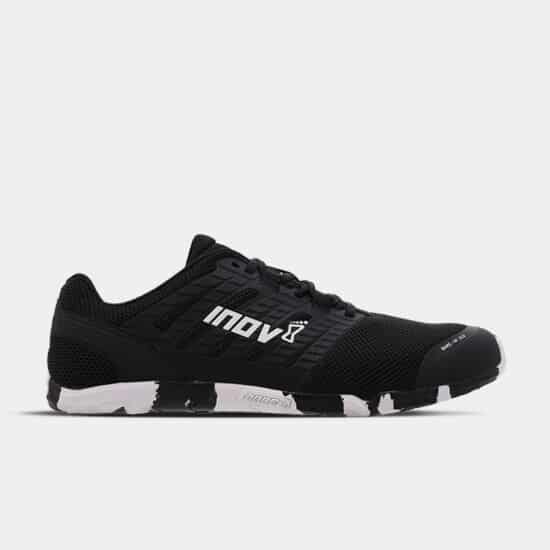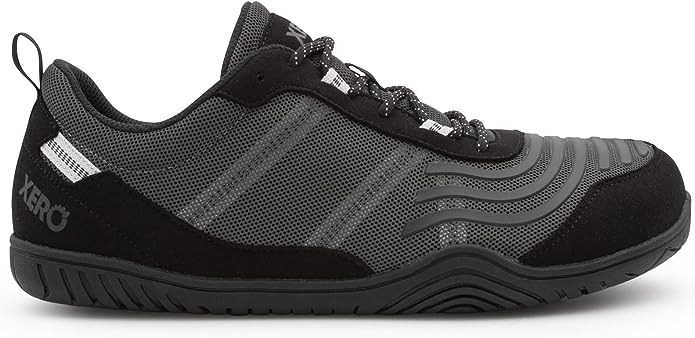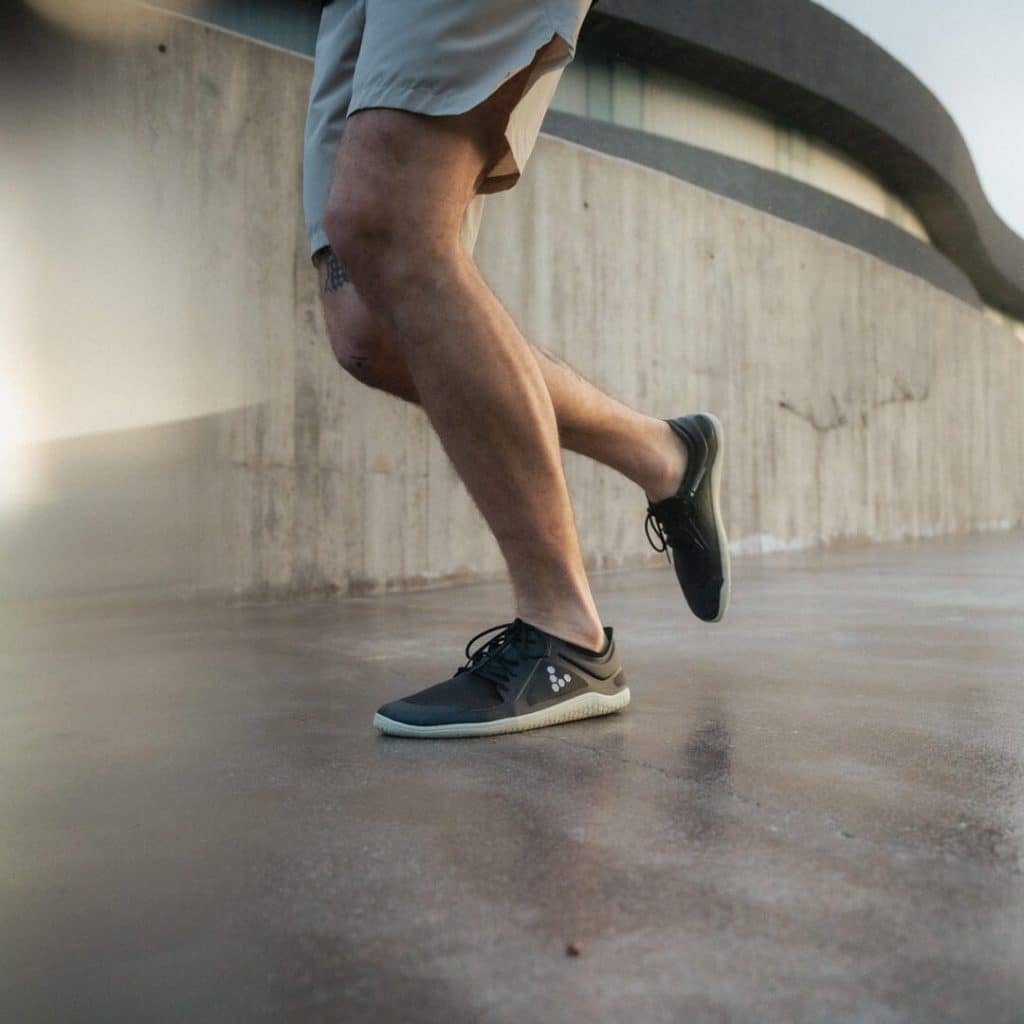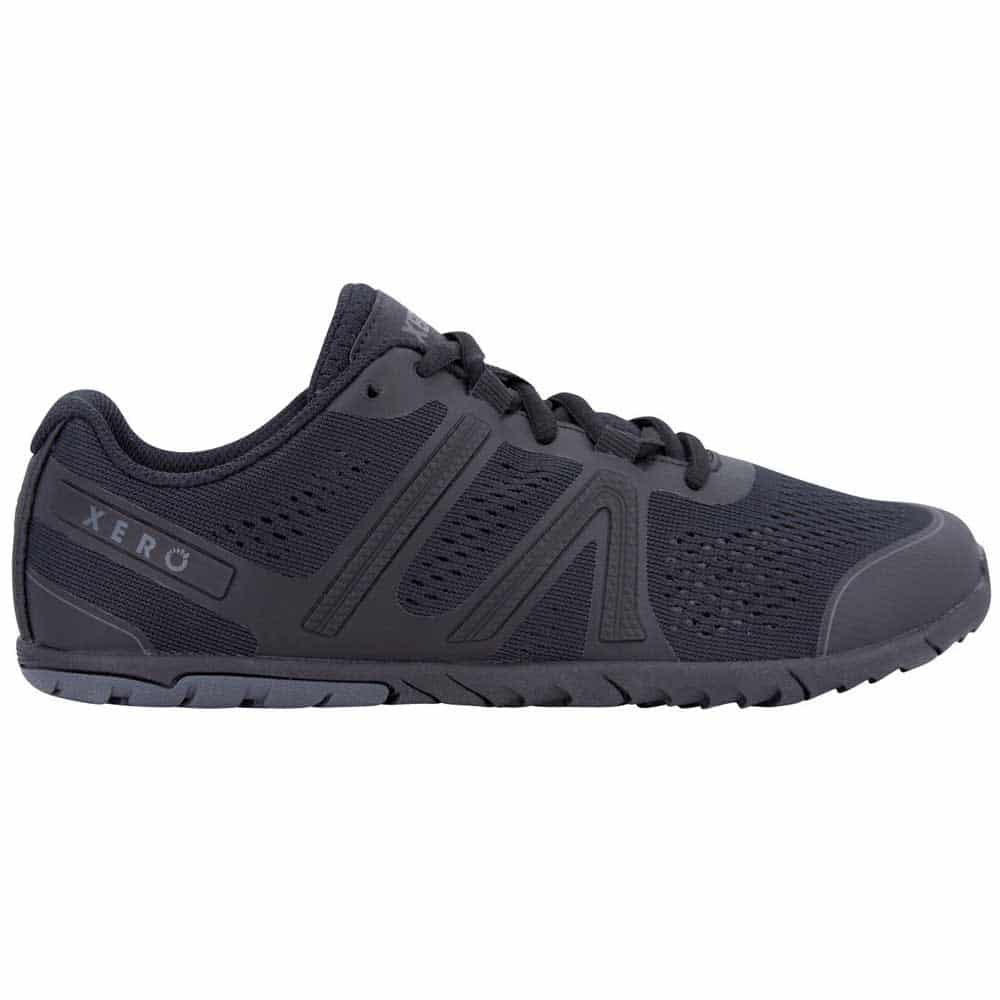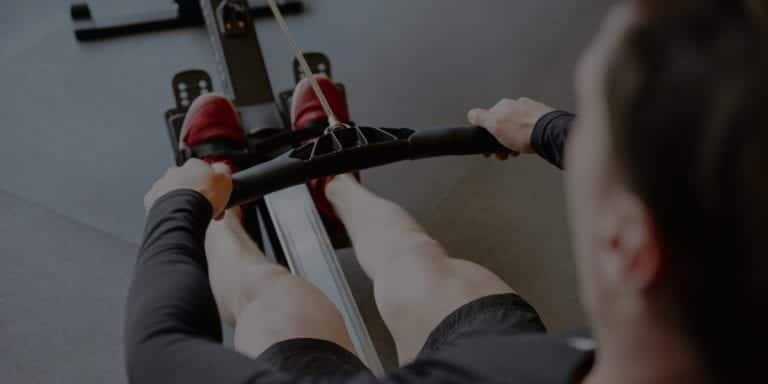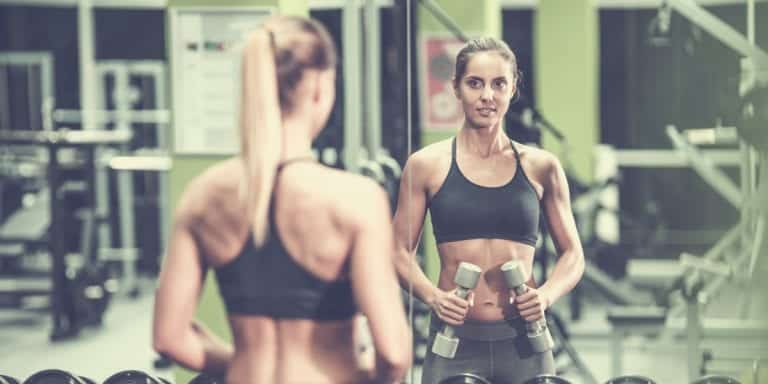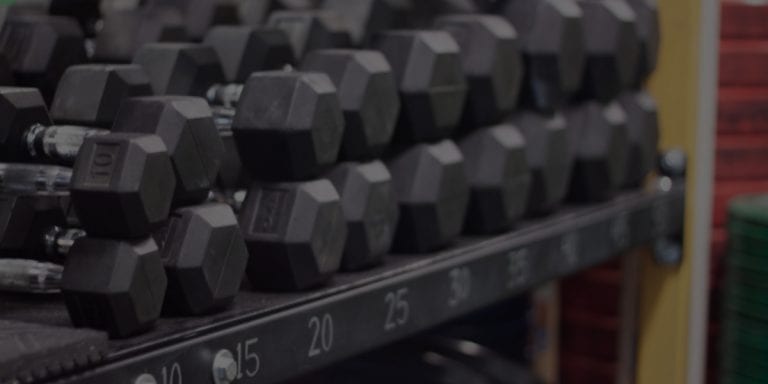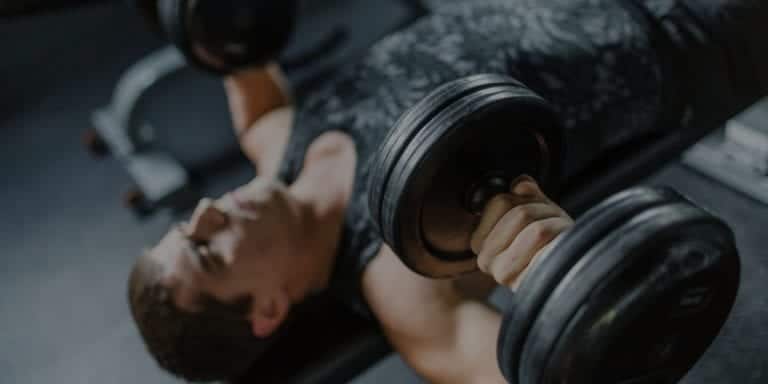Best Barefoot Shoes
Barefoot shoes are covering much ground in the fitness arena, with companies upping their game to bring the very best, most comfortable and aesthetically pleasing shoes to meet demand. Here, our very own Ben Hardman puts the spotlight on the best barefoot shoes in the UK today, and why you may – or may not – need them.
Are you looking for the best barefoot shoes?
You’re not the only one. Barefoot shoes have taken the UK market by storm in recent years and with popular longevity figures such as Dr Peter Attia being a strong advocate for their benefits – it’s easy to see why they are high on the list of health savvy folk.
Whether you’re wanting to train in the gym, run outside, go on walks, or just for everyday going about your business, a good barefoot shoe can do it all. All whilst offering a more natural, comfortable and minimalist alternative to traditional footwear. This is why barefoot shoes are also known as minimalist shoes.
But as their popularity soars, so does the variety of options available. All these options can make it difficult to decide which barefoot shoe is the best for you.
That’s where we come in. We’ve tried them all (or our kids have), and rounded up the very best barefoot shoes in this article to help you make an informed decision.
Top 3 Barefoot Shoes (based on need)
1 – Best For Strength Training – Vivo Motus Strength – View Best Deals Here
2 – Best all-rounder – Vivobarefoot Primus Lite III – View Best Deals Here
3 – Best For Kids – Saguaro Smart I – Save 10% with code FITNESSBRAIN Here
9 Best Barefoot Shoes
Here are the top 9 barefoot shoes available in the UK right now…
Vivobarefoot Motus Strength JJF Mens
The Vivobarefoot Motus Strength JJF men’s shoe is designed for athletes and fitness enthusiasts looking for a good training shoe. The Motus Strength is the first dedicated minimalist shoe for strength training and cross-training.
This barefoot training shoe is inspired and named after US surfing legend John John Florence. So good, they named him twice, as they say. For surfing, you need strong feet and excellent sensory perception. The aim of Vivobarefoot with their Motus Strength JJF shoe is to let your feet move naturally when you’re lifting weights and training hard – a great idea.
Firstly, I like the look of the shoe. It has the look of a lifting shoe without being too ‘outdoorsy’ and out of place in the gym. I particularly like the outsole design and heel wrap.
The Motus Strength JJF features include a 2mm sole base to provide ground feedback, with a 1.5mm tread depth.
The tread depth, also known as ‘lugs’, is important for strength training as you want maximum grip, traction and durability on a solid surface.
For a barefoot shoe, 1.5mm may be considered thick, but it makes it durable and will elongate the life of the shoe. Made from 100% rubber, the idea with the sole base and lugs here is to give your feet grounding and support, whilst not compromising on flexibility.
This barefoot shoe has a wide toe box for natural toe splay and high midfoot sidewalls to lend support for lateral movements and changes in direction. There’s also a heel wrap, which provides extra support when jumping and changing direction. This is particularly important for cross-training.
In terms of the upper, the Motus Strength JJF is well-structured and made from highly breathable mesh. It also has an 85% recycled plastic content, which is great, and particularly appealing for the environmentally-aware.
Although the shoe is lightweight at roughly 282g, it has a heavier feel than other barefoot shoes, which is needed to be functional for cross-training.
Our chief editor Jason has been wearing the Motus Strength JJFs for around a month and he swears by them. He said, “The Motus Strength barefoot trainers are without a doubt the highest-quality barefoot trainer I’ve seen. For strength training, especially squats, deadlifts, or any exercise that requires you to stand – they are perfect. Giving you a completely flat sole, allowing you to have improved stability and the opportunity to really strengthen those small muscles in your feet.“
All in all – anyone looking for a barefoot trainer for any kind of strength or crossfit training shouldn’t look past the Motus Strength.
Saguaro Barefoot Trainers – Vitality III
Saguaro are one of the best budget barefoot trainer options available to buy in the UK – and we’ve tested a fair few from their range. The Vitality 3 barefoot shoe would be our pick from their collection for adults, and for kids – the Smart 1 trainer would be our top choice.
It’s important to note that there is a slight sacrifice in overall quality with these trainers when compared to the likes of Vivobarefoot and Xero – but then you are getting a relatively good-quality product at a fraction of the cost of their competition – so do keep this in mind.
Our editor Jason has used both the Vitality 3 trainers from Saguaro and the Motus Strength from Vivo – and he continues to use both – with the Vitality 3 being more comfortable for everyday use and longer walks and the Motus Strength being better for stability (and thus strength training).
A sole height of 5mm offers a zero drop experience, and these are some of the most lightweight bare foot trainers you’ll find. The insoles are removable and replaceable, although you’ll likely want to keep them in for everyday use rather than use the trainers without them.
The sizing of the adult shoes came up sightly bigger than we expected (around half a size bigger), and the kids Smart 1 trainers came up around 1 size too big for us.
However, the customer service was incredible – when we informed them of this, they simply sent us the next size down and told us to keep the other pair for when she grows into them – and no, we didn’t tell them we were reviewing the product beforehand.
So – Saguaro gets a big thumbs up in terms of quality, cost and customer service – and with a 30 day return policy they are well worth a try if you are looking for some lower cost barefoot shoes.
For pottering around the garden and long walks in the countryside they are perfect – and my editor’s 9-year-old daughter loves her Smart 1s.
Use the code FITNESSBRAIN and save a further 10% too!
Vivobarefoot Primus Lite III
The Primus Lite III is the latest iteration of the popular Primus Lite series from Vivobarefoot. Since the last shoe, Vivobarefoot have made key upgrades to make the Primus Lite III even lighter and more comfortable than previous versions.
The Primus Lite III is a versatile barefoot shoe option. It’s an all-rounder that can be used for training, outdoor activities, and even everyday wear. Its minimalist design provides a natural feel and excellent ground feedback, allowing your feet to move naturally so you can move the way you were meant to.
In terms of looks, the Primus Lite III looks more like a regular trainer than most barefoot and training shoes. It has a wide build and toe box that should be suitable for most people, and comes in a few colours, including all-white, which I don’t think will stay white for very long. I’d go for the black version here.
The Primus Lite III is super lightweight, weighing in at 232g. They almost feel like they are barely there. It has a 2mm performance outsole and thin tread depth to give minimal distance between your foot and the floor. You can remove the insole too if you want to get even closer to the ground.
This shoe has a low profile with restricted lateral support and a fairly unstructured upper. This can make Primus Lite III feel a bit ‘slippy’, particularly if the sizing isn’t quite right. But with a well-fitted shoe, the design will help create strong feet.
I’ve worn these myself – and for training in the gym, the Primus Lite IIIs are top notch.
The wide toe box, traction and floor feel are all great for deadlifts, bench presses, leg presses and box jumps. Running and HIIT workouts are also great with this barefoot shoe. However, if you’re not used to barefoot shoes, it may take a little while to transition and get used to the new feel. Give it a bit of time.
Vivobarefoot is a B Certified Company, meaning they aim to put environmental concerns at the forefront of their business. For example, the performance insole is made from 98% recycled foam and the upper, laces and lining all feature strong recycled material content. This is good to see.
Xero Shoes Prio Neo
The Prio Neo minimalist shoe from Xero Shoes takes the original Prio to the next level. And that’s high praise, because the original is pretty legendary in itself and is Xero’s best-selling shoe.
The original Prio is a great all-round barefoot shoe, but the Prio Neo is targeted primarily at performance training and ‘athleisure’.
You can see this straight away as it looks more like a sportier weightlifting shoe compared to the standard Prio, which in my opinion is a good thing. With an updated, more durable outsole and strategically placed protection, the Prio Neo is much more of a training shoe.
It comes with breathable upper mesh, moisture-wicking lining and adjustable heel, and both midstep and midfoot straps to give you a true custom and comfortable fit.
All this whilst still being a true barefoot shoe. The Prio Neo has a low profile – it’s super light at around 247g and comes with a zero-drop, non-elevated heel design. It has an extra-wide top box to allow your feet to move naturally, and is super flexible – you can twist and turn this shoe in just about any direction.
The Xero Prio Neo is made to last and comes with a 5,000-mile sole warranty. Excellent.
All in all, the Prio Neo is a fantastic barefoot shoe. They are really comfortable and can be worn for everyday activities, as well as tough training in the gym. It’s a great beginner barefoot shoe and comes at a reasonable price.
Inov-8 Bare-XF 210 V3
Experience the latest evolution in barefoot shoes from Inov-8 with their Bare-XF 210 V3. As the third generation of the original Bare-XF 210, this version is the best one to date.
The Inov-8 Bare-XF 210 V3 is a solid, all-round barefoot shoe. It’s really lightweight (around 210g), close to the ground, and comes with a great design.
I think it’s one of the best-looking barefoot shoes out there.
The Bare XF V3 has been designed for natural movement. It is a zero-drop shoe with a wide toe box, so your feet can adapt to any surface. The aim here is to stimulate correct posture and form to make sure no energy is lost through your movements.
Starting at the bottom, this shoe comes with a 3mm power footbed and 1.5mm of lug depth to give you high performance when training.
The outsole provides sticky grip and you’ve also got an external heel cage and lacing for further stability. This makes the Inov-8 Bare XF V3 perfect for cross-training, jumping, rope climbs, lifting and running.
Onto the upper, the Bare-XF V3 has a seamless 3D air mesh design to get plenty of circulation for your feet to keep them dry and cool during a workout. It also has welded overlays on the upper for added structure and Rope-Tec protection.
Despite all the features, you’ll barely notice that you have the Bare XFs on. Their extra comfortable fit and lightweight nature make it feel like you’re wearing a pair of socks. A fantastic barefoot shoe.
Xero Shoes 360
The Xero Shoes 360 are another versatile barefoot shoe option, designed to be suitable for activities including running, training and casual wear.
The Xero 360 is primarily marketed as a minimalist cross-training shoe. It’s similar to the Xero Prio, but the 360 is more rugged and supportive.
With its zero-drop design, responsive tread, lightweight feel and highly breathable mesh (you can see through from one side to the other) you’ll be able to run, jump and lift in these shoes.
The Xero Shoes 360 provides the feel, comfort and performance of a true barefoot shoe whilst allowing you to workout properly. The 360 has a grippy outsole which ventures up into the midfoot, with ridges on the upper to protect when rope climbing and a little extra protection on the toe box. The front of the shoe is nice and wide to allow your toes to relax and spread out naturally.
The Xero 360 has adjustable midfoot and instep straps to give you a personalised fit and hold you securely in place.
Underneath the shoe, the Xero 360 has a multi-directional tread for increased traction and grip. Both of these features are important for all of the lateral movements involved in CrossFit. The insole is removable to give you more flexibility depending on the activity you’re doing. For example, if you’re deadlifting, it’s handy to take the sole out and get closer to the floor.
For all their excellent functionality, I’m not a huge fan of the looks and think there are better-looking barefoot shoes out there. The toe box area is set quite thick, which may make the Xero 360 stand out when going about your everyday business.
Xero Shoes Zelen
The Xero Shoes Zelen is primarily a running shoe as opposed to a gym training shoe. This is because of its sleek and slender construction. That said, it’s versatile enough to suit a cross-training-style workout. It all comes down to personal preference here.
The Zelen shoes from Xero have good levels of breathability and are nice and durable. The breathable mesh has a good structure to it, meaning these shoes fit like a glove, so to speak.
The whole upper of this shoe is made from recycled materials, including recycled plastic (rPET). Xero says it’s one of the first barefoot shoes made with the environment in mind. Zelen is actually a Czech word that means ‘green’. And Czech is where Xero’s European HQ is.
This barefoot shoe comes with a 5mm FeelTrue sole and has a tread that looks like a tyre tread. This design aims to give you true grip and traction on road surfaces, whilst retaining the ground feedback elements that are essential for barefoot shoes.
The sole also contains an added ingredient to go with the rubber to make these shoes more biodegradable if they reach landfill at some point in their lifetime (hopefully in many, many years’ time).
In terms of the other features, all of Xero’s barefoot shoes come with a wide toe box, a zero-drop angle from heel to toe, and are really flexible. The inner 2mm sock liner is also removable if you want an even better connection with the floor.
I like the appearance of Xero’s Zelen shoes, but they’re not the best-looking on the list. Also, if you’re running outside when the weather isn’t too good, your feet will probably get wet and potentially cold.
Overall, a really good hybrid barefoot shoe from Xero that’s suitable for running, training and going to the shops in.
Vivobarefoot Primus Lite All Weather
Now, we know the weather in the UK can be inclement at best most of the year. It can also be wet and unpredictable.
If you’re someone who likes to run outdoors and go for walks in all weathers, the Vivobarefoot Lite All Weather could be the perfect barefoot shoe for you.
Rain or shine, this water-resistant shoe will allow you to move naturally and freely while keeping feet protected from the elements. This is because the shoe is constructed using water-resistant and non-absorbent materials.
The Primus Lite All Weather comes with a 2mm rubber sole base with a 2mm tread depth. The tread uses Vivobarefoot’s signature hexagonal shape for grip and flexibility. The sole carefully overlaps at the toe to give protection when travelling across hard surfaces in urban environments.
On the sole, there’s a 0.8mm Pro5 Puncture Resistant finish to protect your underfoot, whilst still letting all the ground feeling in. This is both lightweight and flexible. At 232g, these barefoot shoes are very much lightweight.
The Primus Lite All Weather has a low side profile with a slightly low profile at the heel. This gives you as much natural movement as possible, whilst being mindful about support.
Inside the shoe, there’s an Active BloomFoam insole. Contrasting to petrochemical-based EVA foam, the Active BloomFoam is made using algae biomass. It’s the first true sustainable alternative to EVA foam on the market. This insole will help you stay more comfortable mile after mile, but it can be removed too.
I like the look of these vegan-friendly shoes. Smart and not clunky at all.
Xero Shoes HFS II
The Xero Shoes HFS II is an upgraded model to the original and best-selling HFS road running barefoot shoe.
The Xero HFS II incorporates design upgrades for improved functionality, including a new tread which takes inspiration from car tyres. You still get the ground feel that you’re looking for with barefoot shoes, but you also get grip and traction on surfaces such as asphalt and concrete.
As well as road running, these shoes are suitable for HIIT and cross-training style workouts thanks to the sturdier manufacturing, good breathability and deeper tread.
It looks like there’s a foam layer on the outsole, which would go against the main idea of barefoot. This is just a design feature. There’s a very thin layer of BareFoam on the inside, which wraps around the outside to give a familiar look to the shoe. On the inside, there’s a removal insole which you can keep in or take out depending on the feel you want.
There’s a slightly wider toe box, but the HFS II comes with the same extreme flexibility, lightweight construct, zero heel-drop and minimal stack height.
In terms of looks, they do have that trail-shoe look about them, which I’m not a lover of, but each to their own. For functionality, the HFS II is up there as a great barefoot shoe.
Understanding Barefoot Shoes
Barefoot shoes aim to mimic the natural sensation of walking or running barefoot while providing essential protection and support for the feet.
These shoes typically have thin, highly flexible soles and a wide toe box. This allows for natural foot movement and improved proprioception – the awareness and recognition by your brain of your body’s position in space.
Barefoot shoes are really versatile and suitable for all sorts of activities. Each barefoot shoe differs and may have incorporated technology and features to make them specialised for an activity, but in general you can wear barefoot shoes for:
- Running
- Weight training and lifting
- Cross training – HIIT, CrossFit
- Walking
- Hiking
- Everyday wear
Benefits of barefoot shoes
For the wearer, barefoot shoes can bring a number of benefits. Some of the benefits and advantages won’t happen overnight, but they’ll become noticeable with increased wear and as your body adjusts.
It’s important to give your feet time to adapt to any new minimalist footwear. Transitioning too quickly can lead to discomfort or injury. Start by wearing them for short periods or specific activities to gradually build up foot strength and resilience.
Here are the main benefits of wearing barefoot shoes:
Increased foot strength
Barefoot shoes require the foot muscles to work harder than traditional footwear. The unique design encourages the foot’s natural shape and range of motion, allowing the muscles and ligaments to strengthen over time. By choosing these shoes, you’re prioritising long-term foot health.
Improved posture
Barefoot shoes help align the spine and strengthen smaller muscles in the feet and lower legs. You’ll also notice improvements in stabilising muscles throughout your lower body, including up at your hips.
This is all through the improved gait that barefoot shoes encourage. Over the long term, your whole body should benefit from minimalist footwear.
Reduce injury risk
By strengthening feet and lower legs, barefoot shoes may help prevent common running injuries like plantar fasciitis or shin splints. This is all from the improvement of natural running patterns and alignments.
If you’re worried about running outdoors, the soles of barefoot shoes come with enough protection to keep any unwanted objects and sensations out, whilst keeping all the good sensations in.
Enhanced balance and coordination
Wearing minimalist shoes increases sensory feedback from the feet, promoting better balance, stability and coordination. Many runners prefer this as it makes them more in tune with the terrain beneath their feet.
It’s also true on the strength training side. A lot of lifters prefer deadlifting without shoes on as they get a better feel for the lift straight off the ground. Barefoot shoes can offer these benefits across multiple activities.
Encourage natural motion
The minimalist design and wide toe box promote natural foot motion and toe splay, which can enhance proprioception and how your brain is receiving the messages from your feet. After all, humans evolved to exist without attaching shoes to our feet, so it makes sense to go barefoot and get this sensation more often.
Lightweight and breathable
Barefoot shoes are typically very lightweight. Many feel like you’re not wearing any shoes at all, which is the main idea. Minimalist shoes also come with breathable uppers to keep the air circulating freely to maintain cool, dry feet.
Indoors this is fine, but it can be a bit of an issue in the depths of winter. This is why all-weather barefoot shoes are a good shout for wintertime.
Versatility
Many barefoot shoe models can be used for running, training, walking, and casual everyday wear. Once your feet get used to the new motions and sensations, you can potentially keep your barefoot shoes on all day, for all activities.
In addition to these benefits, many brands are now opting for more sustainable construction materials and methods. Vivobarefoot is a Certified B Corporation and Xero has started to incorporate more eco-friendly materials.
Common Questions About Barefoot Shoes
Here are a couple of common questions about barefoot shoes.
How Do You transition to barefoot shoes?
Transitioning to barefoot shoes might require some time for your feet and muscles to adjust. Here are some steps to make the process more comfortable:
- Start slowly: Begin by wearing your barefoot shoes for short periods of time and gradually increase the duration as your body adapts. This can help prevent injuries or discomfort.
- Pay attention to form: Ensure you maintain proper form while walking or running. Focus on landing gently on the balls of your feet and avoid striking your heel with each step. It will feel different at first, but you will adjust.
- Strengthen your feet: Incorporate exercises into your routine to develop foot, ankle and lower leg strength. These can include toe stretches, heel lifts and ankle rolls. Get your feet used to moving in different directions.
Are barefoot shoes suitable for everyone?
Barefoot shoes are not necessarily suitable for everybody.
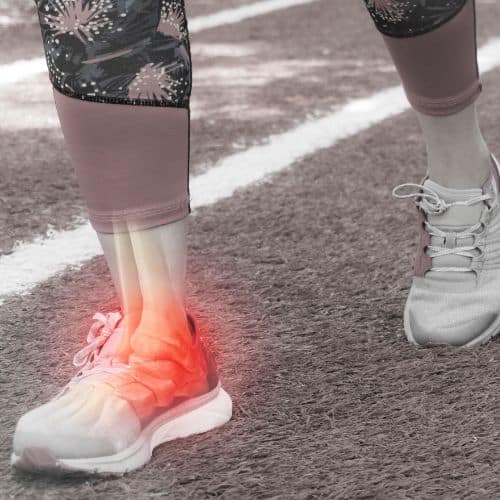
Individuals with specific foot conditions or those who require more support or cushioning might not benefit from wearing barefoot shoes. Factors that need to be considered include:
- Foot conditions: Individuals with flat feet or other foot-related issues may find switching to barefoot shoes unsuitable.
- History of injuries: If you have a history of foot, ankle, or lower leg injuries, you may need additional support that barefoot shoes might not provide.
- Running and walking habits: Those who frequently run or walk on hard surfaces or over long distances might also require more shock absorption than what barefoot shoes offer.
Each person is different. If you like the idea of barefoot shoes and haven’t got any foot conditions or injuries, it’s worth giving them a go.
The versatility of barefoot shoes is one of the best things. For active people, you can go to the gym, walk the dog and do your shopping in barefoot shoes. As your feet get used to them, there isn’t a real need to keep changing your footwear.
Depending on the shoe, the more you wear them, the more the sole will start to fade, and the tread will thin on. This is normal with any trainer, but may be particularly noticeable with the thin sole styles of the barefoot shoes.


